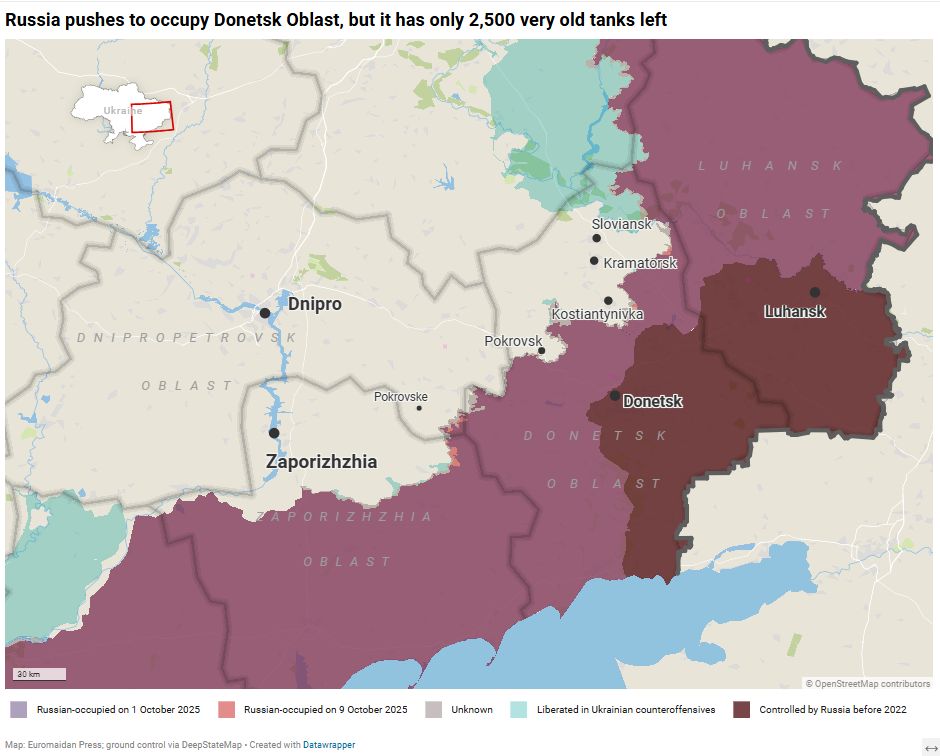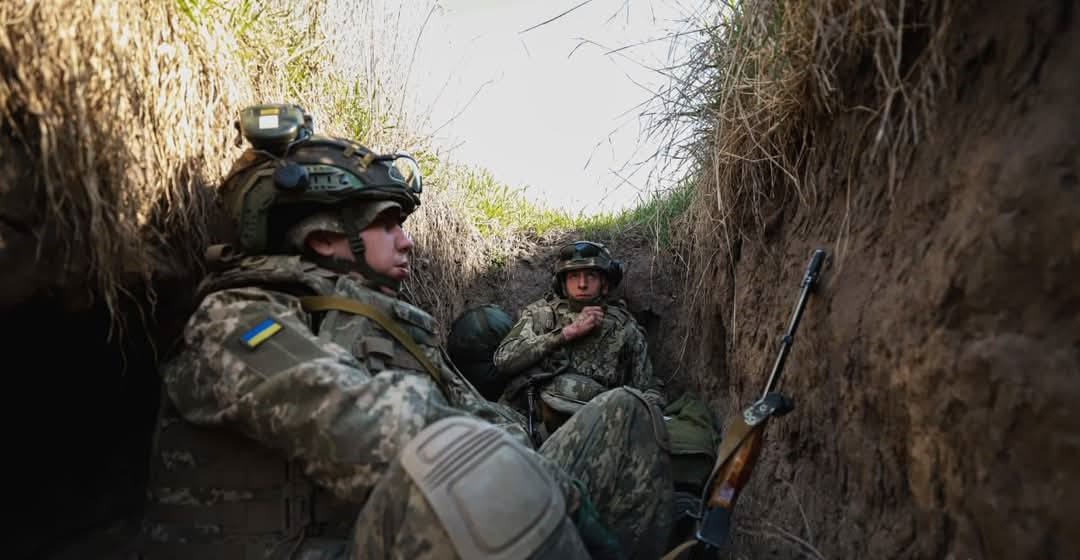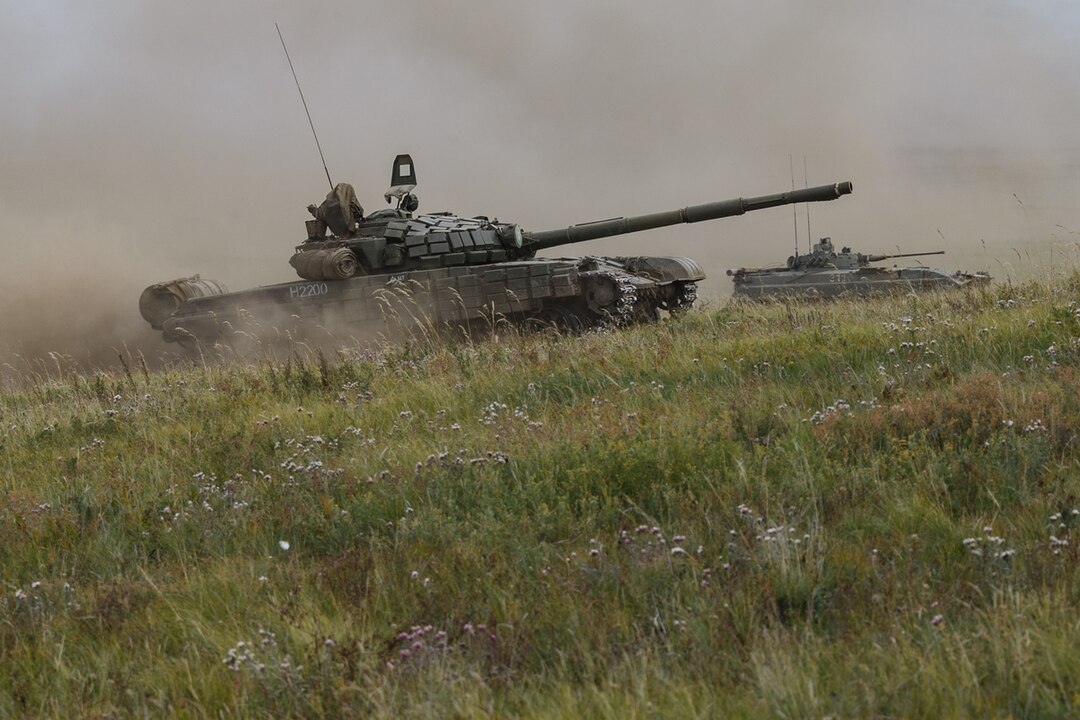- Russia has around 2,500 tanks left in open storage
- Nearly all need expensive restoration—most are 50+ years old
- Russia is shifting back to mechanized warfare after catastrophic infantry losses
- Analysts warn the tank shortage could force strategic decisions by 2026
Russia has scraped down to its last 2,478 tanks—nearly all of them rusted 50-year-old hulks needing expensive, time-consuming restoration before they can fight.
The tank crisis arrives as Russia pivots back to mechanized assaults after catastrophic infantry losses.
That strategic shift exposes Moscow's dilemma. With 282,000 casualties since January exceeding recruitment capacity, Russia is choosing to trade steel for flesh—tanks have three crew versus infantry squads of 12 or more soldiers. But it's a trade that accelerates the drain on vehicle reserves analysts warn could force either mobilization or a fundamental change in approach by 2026.
Scrutinizing recent satellite images of Russia's vast network of vehicle storage yards, open-source analyst Jompy concluded there were just 2,478 tanks left—down from 3,106 just a few months ago.
And all but 92 T-72Bs from the 1970s are badly rusted and in need of extensive—and expensive—overhaul before they can roll into battle.
That doesn't mean Russia won't spend the money to restore these last 2,478 tanks, most of which are 1960s-vintage T-62s or T-64s and T-72s from the '70s.
It does mean the effort will take time, potentially years, and also accelerate the war's drain on the Kremlin's finances.
All of the tanks can be brought back to working condition, Jompy stressed. "It's just a matter of money and time, and how willing the Kremlin is to waste its assets."
Russia's unsustainable vehicle math
The tank dilemma was inevitable. Since widening its war on Ukraine in February 2022, the Russians have lost 17,000 tanks and other heavy vehicles. Meanwhile, they've built just a few thousand armored vehicles—many of which include major components borrowed from older vehicles.
Case in point: most of the "new" T-90Ms rolling out of the Uralvagonzavod tank plant are actually heavily upgraded T-90As from the early 2000s. And those T-90A hulls may have run out recently.
To avoid total de-mechanization, the Kremlin tapped its stocks of stored Cold War vehicles. But these stocks were finite. And now they're finally running low.
The shift back to mechanized warfare
One of the first signs the tank reserves were depleting came early this year, as the Russians finally began towing hundreds of 50-year-old T-72As from their long-term parking spots and lining them up outside Uralvagonzavod.
With a lot of effort, T-72As—crude tanks with unstabilized main guns—can become something akin to modern armored fighting vehicles, albeit with a lot of concessions and design compromises. "As long as the hull is intact, they could eventually be returned to service," Jompy explained.
The Russians may need every vehicle they can get. After shifting to infantry-led assaults for most of this year, Russian regiments are shifting back to mechanized assaults.
Catastrophic infantry losses may explain the return to form. According to one leaked document, Russian forces suffered 282,000 casualties, including at least 87,000 fatalities, between January and September. The losses may exceed the Kremlin's ability to recruit fresh troops.
"A return to classic mechanized attacks makes sense in this new context," Jompy explained.
A tank is no less vulnerable to Ukrainian drones, artillery, and mines than is an infantry squad with similar combat power, but a tank has just three crew. An infantry squad may have a dozen soldiers.
Russia may be shifting back to mechanized assaults in a bid to reduce its manpower losses. The price, of course, will be more vehicle losses. And that may set a clock ticking. Vehicle reserves are very, very low.
The 2026 inflection point

It's for that reason and others that some analysts sense an inflection point approaching.
"In order to capture all of the Donetsk Oblast (which is of questionable actual strategic value for Russia)," wrote Rob Lee, an analyst with the Foreign Policy Research Institute in Philadelphia, "Moscow may need to conduct another mobilization or otherwise change its current approach, which has not achieved a breakthrough despite Ukrainian manpower issues."
Infantry-led infiltration tactics "will likely be less effective over the winter, as well," Lee added. "Ukrainian deep strikes are increasing the costs of the war for Russia, and increased support from the US could further strain Russia's ability to sustain the war."
"If Moscow decides to continue the war well into 2026," Lee concluded, "it will be demonstrating that it is willing to accept growing risks of lasting damage for questionable strategic gains."






